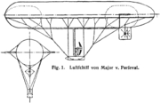
Parseval airships
Encyclopedia
The Parsevals were 22 airship
s built between 1909 and 1919 by the Luft-Fahrzeug-Gesellschaft
(LFG) following the design of August von Parseval
. In 1920s and 1930s, three more airships were built following the Parseval-Naatz (PN) design.
Similarly as the rival Zeppelin
s, the airships were called in both English and German with the inventor's name functioning as a noun (as a substantive). In German the nouns were masculine, that is, "der Parseval", "der Zeppelin".
In contrast to the Zeppelins, the Parsevals were non-rigid or semi-rigid airship
s, with little or no stiffening structure inside the fabric envelope. The Zeppelins had a rigid internal framework made of duralumin
. Both types relied on hydrogen
gas to provide lift.
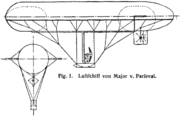
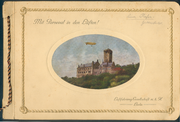
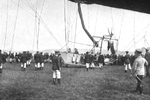 The Versuchsluftschiff (meaning experimental airship) was Parseval's first model. It was rebuilt several times.
The Versuchsluftschiff (meaning experimental airship) was Parseval's first model. It was rebuilt several times.
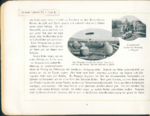

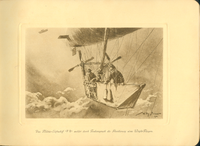
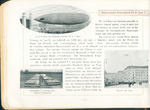

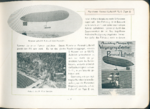
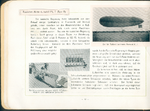
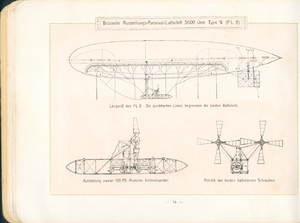
Source: Hackstetter Family History.
January 22 is the memorial day of "skyship" in Japan.

 See: Parseval PL25
See: Parseval PL25
PL 25 was a military airship made in 1914/1915. It was the last single-gondola Parseval airship. It made its first flight on 1915-02-25, entered Navy service until 1916, after 95 flights.
resulted it its dismantlement in 1920.
On 1930-05-21 PN 29 acquired the Swedish call-sign "SE-ACG Sidenhuset", after the then well-known ladies boutique from Stockholm. The word "Sidenhuset" was displayed in large letters on its hull. The owner was "AB Luftskeppsreklam i Stockholm" (Airship Advertising Co).
Sidenhuset's task was to make advertising flights over the 1930 Stockholm Exhibition (Stockholmsutställningen)
. The airship was damaged by wind due to its being parked outside. The manufacturer arrived and it was decided to fly the ship back to Germany for repairs. During the fight it crashed into the Baltic Sea
, south of the island of Öland
, on 1930-06-04. The airship sank, but with no casualties.
Airship
An airship or dirigible is a type of aerostat or "lighter-than-air aircraft" that can be steered and propelled through the air using rudders and propellers or other thrust mechanisms...
s built between 1909 and 1919 by the Luft-Fahrzeug-Gesellschaft
Luft-Fahrzeug-Gesellschaft
Luft-Fahrzeug-Gesellschaft, also referred to as LFG, was a German aircraft manufacturer during World War I. They are best known for their various "Roland" designs, notably the Roland C.II and Roland D.VI, although they also produced a number of airships and experimental...
(LFG) following the design of August von Parseval
August von Parseval
August von Parseval was a German airship designer.As a boy, Von Parseval attended the Royal Bavarian Pagenkorps in Munich from 1873 to 1878, where he took the Fähnrichexamen . He then joined the Royal Bavarian 3rd Infantry Regiment Prinz Carl von Bayern...
. In 1920s and 1930s, three more airships were built following the Parseval-Naatz (PN) design.
Similarly as the rival Zeppelin
Zeppelin
A Zeppelin is a type of rigid airship pioneered by the German Count Ferdinand von Zeppelin in the early 20th century. It was based on designs he had outlined in 1874 and detailed in 1893. His plans were reviewed by committee in 1894 and patented in the United States on 14 March 1899...
s, the airships were called in both English and German with the inventor's name functioning as a noun (as a substantive). In German the nouns were masculine, that is, "der Parseval", "der Zeppelin".
In contrast to the Zeppelins, the Parsevals were non-rigid or semi-rigid airship
Semi-rigid airship
Semi-rigid airships are airships with a partial framework. These often consist of a rigid, or occasionally, flexible, keel frame along the long axis under the aerodynamic hull envelope. The partial framework can also be located inside the hull...
s, with little or no stiffening structure inside the fabric envelope. The Zeppelins had a rigid internal framework made of duralumin
Duralumin
Duralumin is the trade name of one of the earliest types of age-hardenable aluminium alloys. The main alloying constituents are copper, manganese, and magnesium. A commonly used modern equivalent of this alloy type is AA2024, which contains 4.4% copper, 1.5% magnesium, 0.6% manganese and 93.5%...
. Both types relied on hydrogen
Hydrogen
Hydrogen is the chemical element with atomic number 1. It is represented by the symbol H. With an average atomic weight of , hydrogen is the lightest and most abundant chemical element, constituting roughly 75% of the Universe's chemical elemental mass. Stars in the main sequence are mainly...
gas to provide lift.


Experimental airship

- First flight on 26 May 1906 at Berlin's Tegel, a military field
- Pilot: Captain von Krogh
- Length: 48 m, Diameter: 4.8 m
- Power plant: 62 kW (85 PS) Daimler-Motor
- Max speed: 43.2 km/h
- The hull was completed by the balloon constructer Riedinger and was later increased from 2300 to 2800 cubic metre, the length increased to 50 m
- After all the modifications were completed, from 1909 it was designated "PL 1".
PL 1

- developed from the Versuchluftschiff
- Maiden flight: 1909-09-21
- Volume: 3200 m³, 60 m length, 9.4 m Diameter
- Power plant: a 62 kW (85 PS) Daimler-Motor, a 4.25 m-prop
- On 21 and 22 September 1909 three test flights, improvements to steering and hull, afterwards transported by train Zug to Zürich for the Gordon Bennet Ballon-Races, four demonstration flights in Zürich. The Swiss airship department provided gas filling services, and the chief of the Swiss military general staff was among the passengers for the first flight over Swiss soil.
- In February 1910 was used as the "Kaiserliche Aero-Klub-Luftschiff" (Imperial air-club airship) and in BitterfeldBitterfeldBitterfeld is a town in the district Anhalt-Bitterfeld, Saxony-Anhalt, Germany. Since 1 July 2007 it has been part of the town Bitterfeld-Wolfen. It is situated approx. 25 km south of Dessau, and 30 km northeast of Halle...
until its end of service - 20 Flights between 21 September 1909 und 21 April 1910, the last flight a forced landing
- Experimented with an image projector (see also PL 6 where advertising images were projected on the hull)
PL 2 / P.I

- built for the Prussian army, under the marking P.I, construction similar to the PL 1,
- maiden flight: 1908-08-13, in service until 1912 then dismantled.
- Volume: 4000 m³
- Length: 60 m, Diameter: 10.4 m
- Power plant: a 62 kW (85 PS) Daimler-Motor with one airprop
- 45 km/h max speed
PL 3 / P.II

- After seven flights, the hull volume was enlarged on 1909-03-23 from 5600 to 6600m³, refilling starts 1909-06-05, length remains at 70 m, diameter increased by one metre to 11.3 m, test flight 1909-06-28 in Bitterfeld,
- regular passenger flights with up to seven passengers and 4 crew from the International air exhibition in Frankfurt/Main from 7 August until the end of October 1909. Total 74 flights,
- put out of service after flying into the sea on 1910-05-16
- Power plant: two 81 kW (110 PS) N.A.G.-Motors, each driving a four-bladed airprop
- max speed: 51 km/h
PL 4 - M I

- PL 4 was purchased by the Kaiserlich und königlich Military-aero-nautical institute and stationed in FischamendFischamendFischamend is a city in the district of Wien-Umgebung in Lower Austria, Austria....
, Wien-UmgebungWien-UmgebungBezirk Wien-Umgebung is a district of the state of Lower Austria in Austria. The district comprises four non-contiguous districts on the outer fringes of Vienna: these are Klosterneuburg and Gerasdorf to the north of the city, Schwechat to its south-east and Purkersdorf on Vienna's western...
under the designation "M I" - Maiden flight: 26. November 1909
- Volume: 2300 m³,
- Power plant: Austro-Daimler-Motors from Wiener NeustadtWiener Neustadt-Main sights:* The Late-Romanesque Dom, consecrated in 1279 and cathedral from 1469 to 1785. The choir and transept, in Gothic style, are from the 14th century. In the late 15th century 12 statues of the Apostles were added in the apse, while the bust of Cardinal Melchior Klesl is attributed to...
, either 1x 62 kW or 2x 33 kW (1x 85 or 2x 45 PS), each of which driving a single airprop - Hull built by an Austrian rubber factory in Wimpassing im SchwarzataleWimpassing im SchwarzataleWimpassing im Schwarzatale is a town in the district of Neunkirchen in the Austrian state of Lower Austria.There is a population of 2000, the town is planted on the main route to Vienna and has beautiful scenery for keen walkers and cyclists.-External links:...
- Length: 50 m, Diameter 12.5 m,
- Flying ceiling: 1000 metre
- Crew: 2-3, passengers: 4-5 (capacity for 7 persons in total)
PL 5

- over 150 passenger flights
- on 1911-06-11 destroyed in a fire while emptying the gas hull in Münden, later replaced by PL 9
- Volume 1350 m³
- max speed: 12 metres per second (43.2 km/h)
- Flight duration 5 hours
- Flying ceiling: 1,000 metres
- Crew and passengers: 3 to 4
PL 6

- Maiden flight 1910-06-30,
- intended for round trips
- up to 12 passengers, 4 crew,
- first use of night air advertising on an airship, a projector could project images on its hull
- modernised in 1912 to bring it to same technical standard as the PL 12, volume increased from 6800 to 8000 m³
PL 7 Grif

- delivered to Russia with the marking Grif (Griffin), see also Russian airshipsRussian airshipsThis article outlines some of the rigid and semi-rigid airships used in or built in Russia and the Soviet Union.In 1812, desiring to attack Napolean's army during the French invasion of Russia, Alexander I commissioned the German engineer Leppig to build a large fish-shaped airship propelled by...
- Volume: 6700 m³
- Length 72 m, diameter 14 m
- max speed: 14 metres per second (50.4 km/h), possibly 16 metres per second (57.6 km/h) with only 6 persons
- Flight duration: 20 hours or longer
- Flight ceiling: 2500 metre
- Crew and passengers: 12-16
- Crew: 3-4
- The Luft-Fahrzeug-GesellschaftLuft-Fahrzeug-GesellschaftLuft-Fahrzeug-Gesellschaft, also referred to as LFG, was a German aircraft manufacturer during World War I. They are best known for their various "Roland" designs, notably the Roland C.II and Roland D.VI, although they also produced a number of airships and experimental...
brochure shows the PL 7 (Type B), intended for the Russian military, one of its six cylinder 100 PS engines, and its gondola with two engines driving semi-rigid props
PL 8 Ersatz P.II

- PL 8 delivered to Prussian army on 1913-03-12, with marking Ersatz P.II (P.II replacement)
- Volume: 5600 m³
- Max speed: 16-17 m/s
- Flight duration: >= 20 h
- Flight ceiling: 2000 m
- Passengers and crew: 7-12
- Crew: 4
- Power plant: Two 150 PS engines each driving a four-bladed airprop
PL 9
- 1913 sold to the Turkish military
- first flight in YeşilköyYesilköyYeşilköy is a neighborhood of the Bakırköy municipality of Istanbul, Turkey.It is located along the Marmara Sea about 11 kilometers west of Istanbul's historic city center...
occurred on 23 July 1913. - Pilot and Instructor: Regierungsbaumeister Karl Hackstetter. Set up Airship Hall in Constantinople.
Source: Hackstetter Family History.
PL 10 Sportsluftschiff
- PL 10 1700 m³ Sportsluftschiff after the first flight in 1910 dismantled and stored in Bitterfeld
PL 11 - P.III
- PL 11 first flight 1912-03-01, for the Prussian Army designated as P.III until middle 1914
PL 12 Charlotte
- Charlotte getauft,
- built for the "Rheinisch-Westfälischen Flug- und Sportplatz-Gesellschaft mbH Wanne - Herten", where it was used for roundtrips
- Maiden flight: 1912-05-11
- PL 12 was used as a passenger and advertising airship until 1914.
- Length 82 m, diameter 14 m
- Power plant: 2x 81 kW (110 PS) NAGNagNag may refer to:* Nag Missile, a third generation "fire and forget" anti-tank missile* Nag, a horse that is of low quality.* Nag, a male cobra in Rudyard Kipling's Rikki-Tikki-Tavi* Nag, a multi user tasklist manager included in Horde...
-engines - Volume: 8000 m³
- Max speed: 48 km/h
PL 13 Yuhi
- 1912 delivered as Yuhi(雄飛号) to JapanJapanJapan is an island nation in East Asia. Located in the Pacific Ocean, it lies to the east of the Sea of Japan, China, North Korea, South Korea and Russia, stretching from the Sea of Okhotsk in the north to the East China Sea and Taiwan in the south...
、In 1916 January 22 Yuhi flew from Tokorozawa to OsakaOsakais a city in the Kansai region of Japan's main island of Honshu, a designated city under the Local Autonomy Law, the capital city of Osaka Prefecture and also the biggest part of Keihanshin area, which is represented by three major cities of Japan, Kyoto, Osaka and Kobe...
.
January 22 is the memorial day of "skyship" in Japan.
PL 16 - P.IV
- Maiden flight: 1913-10-02
- Middle of 1914 delivered to the Prussian army, where it was renamed "P.IV"
- In service until 1916-03-24
PL 18 - No.4

- Maiden flight: 23. April 1913
- 1913 delivered to the English Navy, under the marking "Parseval No.4". The British would describe its service as very successful
- Length: 80 m; diameter: 15 m; volume: 8800 m³.
- Power plant: 2x 132kW (180 PS) Maybach-engines, max speed 68 km/h,
- Crew: 2 officers and 7 men. Radio and Weaponry installed
- Served during the World War I as patrol ship, demobilised on July 1917
PL 19
- PL 19 was intended for the British Royal NavyRoyal NavyThe Royal Navy is the naval warfare service branch of the British Armed Forces. Founded in the 16th century, it is the oldest service branch and is known as the Senior Service...
as "Parseval No.5", but upon war's outbreak was used instead by the German Navy. In England VickersVickersVickers was a famous name in British engineering that existed through many companies from 1828 until 1999.-Early history:Vickers was formed in Sheffield as a steel foundry by the miller Edward Vickers and his father-in-law George Naylor in 1828. Naylor was a partner in the foundry Naylor &...
constructed three replacement hulls and 2 gondolas with identical specifications. - Maiden flight: 30 August 1914
- Length: 92 m; Diameter: 15 m; Volume: 10,000 m³
- Power plant: two 132 kW (180 PS) Maybach-engines, max speed: 76 km/h,
- On 1915-01-25 after an air attack on LiepājaLiepajaLiepāja ; ), is a republican city in western Latvia, located on the Baltic Sea directly at 21°E. It is the largest city in the Kurzeme Region of Latvia, the third largest city in Latvia after Riga and Daugavpils and an important ice-free port...
, LatviaLatviaLatvia , officially the Republic of Latvia , is a country in the Baltic region of Northern Europe. It is bordered to the north by Estonia , to the south by Lithuania , to the east by the Russian Federation , to the southeast by Belarus and shares maritime borders to the west with Sweden...
, due to artillery damage made emergency sea-landing and crew taken as Russian prisoners of war
PL 25

Parseval PL25
|-See also:...
PL 25 was a military airship made in 1914/1915. It was the last single-gondola Parseval airship. It made its first flight on 1915-02-25, entered Navy service until 1916, after 95 flights.
PL 26
PL 26 was a semirigid airship whose maiden flight was on 1915-10-26, but it had an accident upon landing and was destroyed in a fire, with no casualties.- Length: 157 m, maximum diameter: 19.5 m
- Volume: 31,300 m³
- max speed: 100 km/h
- Power plant: four 177 kW (240 PS) Maybach-engines
PL 27
PL 27's maiden flight was on 1917-03-08. The major difference from its predecessor PL 26 was the specification of the gondola. Because it no longer met increased military requirements, it was not put to military service but instead converted to a passenger airship in 1919. The Treaty of VersaillesTreaty of Versailles
The Treaty of Versailles was one of the peace treaties at the end of World War I. It ended the state of war between Germany and the Allied Powers. It was signed on 28 June 1919, exactly five years after the assassination of Archduke Franz Ferdinand. The other Central Powers on the German side of...
resulted it its dismantlement in 1920.
- Length: 157 m, maximum diameter: 19.5 m
- Volume: 31,300 m³
- Maximum speed: 100 km/h
- Power plant: four 177 kW (240 PS) Maybach-engines
- Lifting capacity 18 tonneTonneThe tonne, known as the metric ton in the US , often put pleonastically as "metric tonne" to avoid confusion with ton, is a metric system unit of mass equal to 1000 kilograms. The tonne is not an International System of Units unit, but is accepted for use with the SI...
Parseval-Naatz PN 28
- semirigid airship
- Trumpf-advertising airship, (like the Raab-Katzenstein RK 27)
- built in Seddin/Pommern by the Berlin "Wasser- und Luftfahrzeug GmbH"
- Maiden flighton 1929-06-06 in Berlin
- Official marking: D-PN28
- Volume: 1800 m³
Parseval-Naatz PN 29 Sidenhuset
- semirigid airship
- built in 1929 as D-PN 29 with a passenger capacity of 5
- Volume: 2300 m³
- Length: 44 m, diameter: 10 m
- Power plant: one Siemens-Halske-engine of 75 kW (100 PS)
- Max speed 82 km/h
- Total flying time: about 600 hours in 200 flights
On 1930-05-21 PN 29 acquired the Swedish call-sign "SE-ACG Sidenhuset", after the then well-known ladies boutique from Stockholm. The word "Sidenhuset" was displayed in large letters on its hull. The owner was "AB Luftskeppsreklam i Stockholm" (Airship Advertising Co).
Sidenhuset's task was to make advertising flights over the 1930 Stockholm Exhibition (Stockholmsutställningen)
Stockholm International Exhibition (1930)
The Stockholm Exhibition was an exhibition held in 1930 in Stockholm, Sweden, that had a great impact on the architectural styles known as Functionalism and International Style....
. The airship was damaged by wind due to its being parked outside. The manufacturer arrived and it was decided to fly the ship back to Germany for repairs. During the fight it crashed into the Baltic Sea
Baltic Sea
The Baltic Sea is a brackish mediterranean sea located in Northern Europe, from 53°N to 66°N latitude and from 20°E to 26°E longitude. It is bounded by the Scandinavian Peninsula, the mainland of Europe, and the Danish islands. It drains into the Kattegat by way of the Øresund, the Great Belt and...
, south of the island of Öland
Öland
' is the second largest Swedish island and the smallest of the traditional provinces of Sweden. Öland has an area of 1,342 km² and is located in the Baltic Sea just off the coast of Småland. The island has 25,000 inhabitants, but during Swedish Midsummer it is visited by up to 500,000 people...
, on 1930-06-04. The airship sank, but with no casualties.
Parseval - Naatz PN 30 Odol
PN 30 flew under the callsign Odol as an advertising and research airship.- Callsign: D-PN 30
- Length: 46 m
- maximum diameter: 10.8 m
- Volume: 2600 m³
- maximum speed: 80 km/h
- Power plant: 160 PS Siemens and Halske
- Maiden flight: July 1932
External links
- Jean-Pierre Lauwers (Rosebud) Archive, images of early airships

